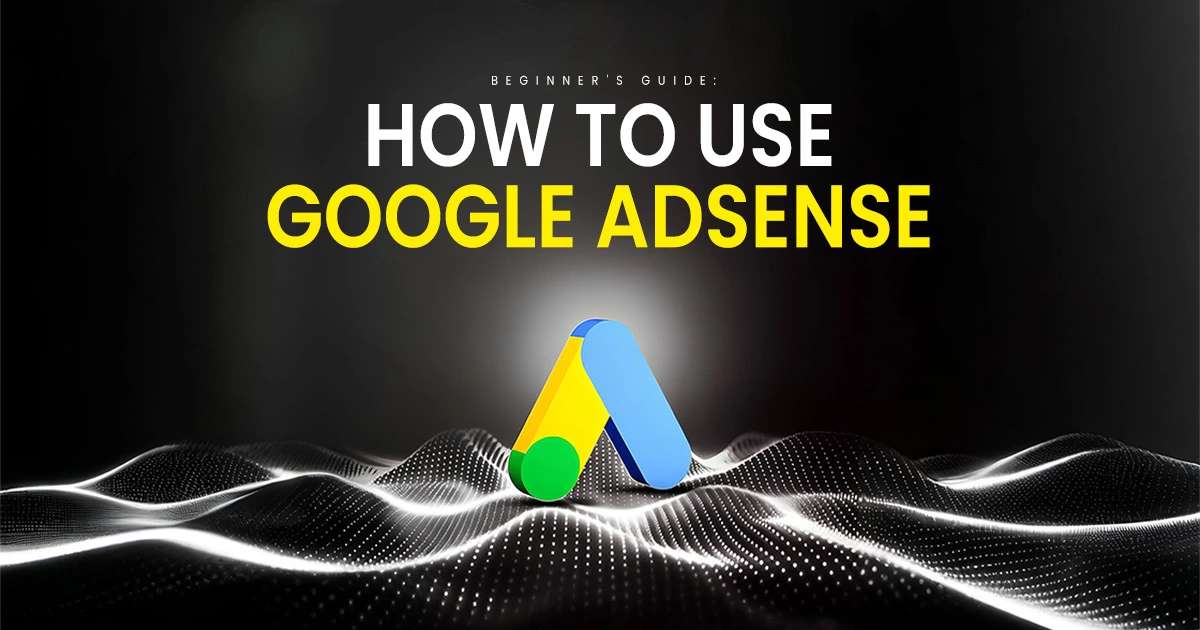Picture this: You’re staring at your PPC dashboard at 2 AM, your chai has gone cold, and that sinking feeling hits. Your budget is bleeding faster than a punctured tyre, but the conversions? Nothing.
If you’ve ever felt like you’re throwing money into a bottomless well, you’re not alone. Thousands of Pakistani businesses waste their PPC budgets on mistakes that are completely avoidable. The good news? Once you spot these traps, you can sidestep them and watch your returns actually make sense.
Let’s dive into the five sneakiest PPC budget traps that are probably draining your ROI right now and, more importantly, how to fix them.
What Is ROI, and Why Should You Care?
Before we jump into the traps, let’s get clear on what we’re actually protecting here. ROI stands for Return on Investment. It’s the metric that tells you whether your PPC campaigns are making you money or just burning through it.
Here’s the ROI formula you need to know:
ROI = (Revenue – Cost) / Cost × 100
Simple, right? If you spend PKR 100,000 on ads and generate PKR 300,000 in revenue, your ROI is 200%. That means for every rupee you invested, you got two rupees back in profit. Understanding what is ROI isn’t just accounting jargon; it’s your compass for every PPC decision you make.
Now that we’re on the same page, let’s expose those budget-draining traps.
Trap #1: Not Knowing How to Calculate PPC Budget (So You Just… Guess)
One of the biggest PPC budget mistakes happens before you even launch a campaign, winging it on budget allocation.
Too many businesses either pick a random number that “feels right” or copy what competitors seem to be doing. But here’s the truth: your PPC budget should be based on your goals, not gut feelings.
How to Calculate PPC Budget the Right Way
Start with these three questions:
- What’s your customer lifetime value (CLV)? If a customer is worth PKR 50,000 over their lifetime, you can afford to spend more to acquire them than if they’re only worth PKR 5,000.
- What’s your target cost per acquisition (CPA)? This is how much you’re willing to pay for one conversion. If your product costs PKR 10,000 and has a 50% profit margin, your max CPA should ideally be below PKR 5,000.
- How many conversions do you need? Multiply your desired conversions by your target CPA to get a baseline budget.
Example: You need 50 new customers this month, and your target CPA is PKR 4,000. That means your monthly PPC budget should be around PKR 200,000.
The Fix
Stop guessing. Use historical data if you have it, or start with a test budget that lets you gather real numbers. Track everything, adjust based on performance, and scale what works. Many Pakistani businesses start with smaller test budgets (PKR 20,000-50,000) to understand their market before scaling up.
Trap #2: Ignoring Negative Keywords (The Silent Budget Killer)
Here’s a trap that sneaks up on you: paying for clicks from people who will never buy from you.
Without negative keywords, your ads show up for searches that are completely irrelevant to your business. Selling premium leather shoes in Lahore? You don’t want to pay when someone searches for “free shoes” or “cheap replica shoes wholesale.”
Why This Matters for Your ROI
Every irrelevant click is wasted budget. If you’re paying PKR 20 per click and getting 100 useless clicks per day, that’s PKR 2,000 gone, PKR 60,000 per month down the drain with zero chance of conversion.
This is especially critical in Pakistan, where PPC costs are rising, and competition is increasing across industries like e-commerce, education, real estate, and tech services.
How to Fix PPC Budget Waste Here
- Review your search terms report weekly. This shows you exactly what people typed before clicking your ad.
- Add negative keywords aggressively. Words like “free,” “cheap,” “wholesale price,” “jobs,” and “internship” (if you’re not hiring) should almost always be excluded.
- Think locally. If you only serve Karachi, add negative keywords for other cities like “Lahore,” “Islamabad,” “Rawalpindi,” etc.
- Consider language nuances. Add Roman Urdu variations if they’re not converting terms like “sasta” (cheap), “free mai,” or “download.”
This single step can cut wasted spend by 20-30% or more.
Trap #3: The “Set It and Forget It” Disaster
Look, I get it. You’ve spent hours setting up your campaigns, and you’re exhausted. The temptation to just let them run while you focus on other fires? Totally understandable.
But here’s what actually happens: You check back two weeks later, and somehow PKR 80,000 has evaporated with barely any sales to show for it. Your competitors? They’ve been tweaking their campaigns every single day while you were away.
What You’re Really Losing
Here’s the thing nobody tells you about neglected campaigns: they don’t just stay flat, they actively get worse:
Your best keywords from last month might be duds this month. That ad everyone was clicking two weeks ago? Now it’s getting ignored. The landing page that was converting beautifully suddenly stops working (maybe your site had issues, maybe customer behavior shifted).
And in Pakistan, we’ve got extra curveballs. Ramadan completely changes shopping patterns, cricket matches kill productivity (and ad performance), and even currency fluctuations can mess with your calculations.
I’ve seen businesses waste PKR 200,000+ simply because nobody was minding the shop.
Here’s How to Actually Stay on Top of Things
You don’t need to become obsessed, but you do need a routine. Every week (or daily if you’re spending big), grab your chai and check:
Are certain keywords just burning money without giving you customers? Cut them loose. Is that ad you wrote getting zero clicks? Time for fresh copy. Which device is actually working, mobile or desktop? In Pakistan, mobile usually wins, but you won’t know unless you check.
Also, watch for patterns. Are your ads performing better in the evening when people are home? On weekends? During lunch breaks? Use that data.
Think of it like running a shop in Anarkali or Liberty Market. You wouldn’t leave your store unattended for weeks, right? Same deal here. Show up, see what’s selling, adjust what’s not.
Trap #4: The “Everyone’s a Customer” Myth
I hear this all the time: “But why would we limit our audience? Cast a wide net, catch more fish!”
Sounds logical, right? Except here’s what really happens: you end up paying for a thousand clicks from people who were never going to buy anyway. It’s like setting up a designer shoe store and advertising to everyone, including people who only wear chappals.
Where Your Money Actually Goes
Broad targeting is expensive in ways that aren’t obvious. Your ads show up for people in cities you don’t even serve. Students click because they’re curious but have no buying power. Competitors check out your ads just to see what you’re up to.
And in Pakistan, where economic segments vary massively between areas, this gets even more wasteful. Why pay for clicks from someone looking for budget options when you’re selling premium products?
Stop the Bleeding, Get Specific
Real talk: Narrow targeting actually makes you more money. Here’s how to do it right:
Stop using broad match keywords. They’re budget killers. If you’re a Lahore-based business, add “Islamabad” and “Karachi” as negative keywords so you’re not paying for clicks you can’t serve.
Actually use the demographic filters. Selling luxury real estate? Target higher income brackets. Selling student packages? Target the right age group. Don’t be shy about it. Google gives you these tools for a reason.
Here’s a real example: A friend’s clothing brand in Karachi was burning PKR 150,000 monthly by targeting “Pakistan” for ladies ‘ suits.” Anyone and everyone clicked. Once we narrowed it to Karachi only with “[ladies suits online Karachi]” and layered in specific demographics, their cost per sale dropped by more than half. Conversions went through the roof.
The lesson? Smaller, targeted audience = less waste = better ROI. Every single time.
Trap #5: The Confused Landing Page Problem
So someone actually clicked your ad. That’s great! They were interested enough to click, which means you did something right.
But then… they land on your homepage. There are a hundred different things to look at, no clear next step, and zero connection to what they just clicked on. Within five seconds, they’re gone. And you just spent PKR 30-50 for absolutely nothing.
This one hurts because it happens after you’ve already paid for the click. The money’s gone, and you’ve got nothing to show for it.
Why This Kills Your Conversions
Let’s say your ad promised “30% Off Eid Collection.” The person clicks, excited about that discount. But your landing page is just your regular homepage with everything from winter wear to accessories, and that Eid discount is buried somewhere three clicks deep.
What do you think happens? They bounce. Guaranteed.
Plus, and this is crucial for Pakistan, if your page takes more than 3-4 seconds to load because of heavy images or slow hosting, you’ve lost them. Our internet speeds are all over the place, and people have zero patience for slow sites.
Make It Simple, Make It Fast
Here’s what actually works:
Build dedicated pages for your campaigns. Not fancy, just focused. If your ad says “Eid Collection 30% Off,” your landing page headline should say exactly that. No confusion, no hunting around.
Make it mobile-friendly first. Most Pakistanis browse on their phones, so if your page looks weird or loads slowly on mobile, you’re dead in the water.
Add the trust signals that actually matter here: Cash on Delivery option (huge for Pakistan), WhatsApp contact button, customer reviews if you have them. These little things massively boost conversions.
One CTA (call-to-action), that’s it. “Shop Now.” “Get Quote.” “Order Today.” Pick one and make it obvious. Don’t give people ten different options; they’ll just leave.
Last thing: test everything. Change the button color, reword your headline, and move things around. I’ve seen a simple change like adding “COD Available” prominently increase conversions by 40%. You won’t know what works until you try.
Pulling It All Together: Your PPC Budget Rescue Plan
Let’s recap the five traps that are probably eating your budget right now:
- Guessing your budget instead of calculating it strategically
- Ignoring negative keywords and paying for worthless clicks
- Setting and forgetting your campaigns instead of optimizing regularly
- Targeting too broadly instead of focusing on your ideal customers
- Sending traffic to the wrong pages instead of conversion-optimized landing pages
Your Next Steps
Avoiding these traps isn’t about spending more; it’s about spending smarter. Here’s your action plan to start improving your PPC ROI today:
This week:
- Audit your search terms report and add negative keywords (including city names and Roman Urdu terms)
- Review your landing pages. Do they match your ad promises? Are they mobile-friendly?
- Check which campaigns have the worst ROI and pause or adjust them
This month:
- Calculate your proper PPC budget using the formula we covered
- Tighten your targeting by city, audience demographics, and match types
- Set a weekly check-in (perhaps Sunday evening) to monitor performance
- Optimize for mobile since most Pakistani users browse on phones
Ongoing:
- Test, test, test ad copy in both English and Urdu, landing pages, bids, everything
- Track your ROI religiously using the formula (Revenue – Cost) / Cost × 100
- Scale what works, kill what doesn’t, and never stop learning
- Stay updated on local trends, Eid, cricket seasons, and exam periods, as they all affect buying behavior
A Word for Pakistani Businesses
The digital landscape in Pakistan is growing rapidly, but competition is fierce. Whether you’re running a startup in Karachi, an e-commerce store in Lahore, or a service business in Islamabad, every rupee counts.
Don’t let these common mistakes drain your budget. Remember: the most successful PPC campaigns in Pakistan aren’t the ones with the biggest budgets; they’re the ones that are smartest about targeting, optimization, and understanding local customer behavior.
Stop letting these budget traps drain your ROI. The difference between a struggling PPC campaign and a profitable one often comes down to spotting and fixing these five issues.
Now go rescue that budget. Your bottom line will thank you.
Ready to transform your PPC strategy? Start with one trap today, fix it this week, and watch what happens to your ROI next month.




